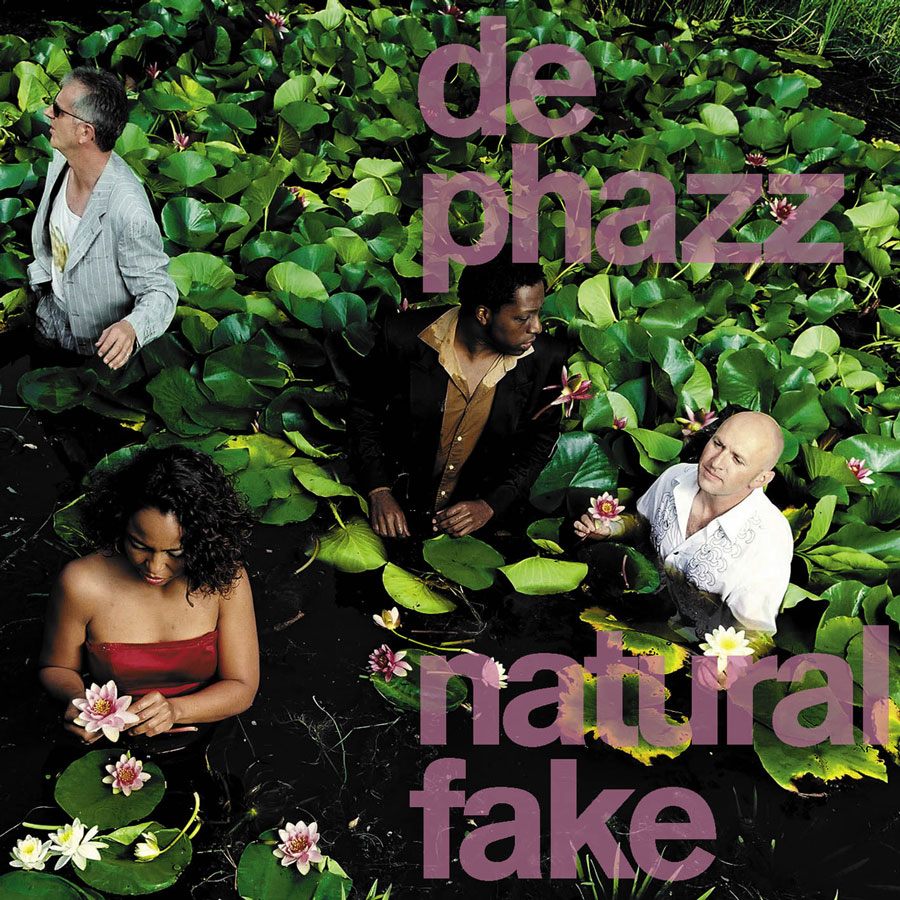De-Phazz – Natural Fake
De-Phazz’s fifth album strikes some new notes. It is both grittier and more gripping, yet still playful and unpredictable. A kind of “unironed elegance” winds its way through the entire musical event – the designer shirt is sweaty, the couch is dusty. “Un ange passé”, the formerly beloved lounge fairy disappears, dancing barefoot across the asphalt…. Rhythms have become more robust, guitars and rusty blues harps shamelessly push themselves to the fore, empathetic choirs add fullness. Compact songs characterize the album. But in the lyrics, the typical De Phazz conundrum unfolds with irony and tender cynicism.
And so “Natural Fake” provokes unpredictable encounters in dubious lighting: physical contact, friction; a rising energy level – critical mass is allowed to unfold. Minor irritations are accepted with approval. Compared to earlier albums, the color dramaturgy has become even more risk-taking. Muddy delta funk, garage chansons brushed against the grain, sound studies thrown down with a casual swing – the new songs illustrate the winding path the band has taken over the past two years. The worldwide stage work has clearly left its mark.
“Natural Fake” is a high-contrast cycle of eighteen new De Phazz soundscapes. Dots of red and bright yellow set subversive accents on a warm, earth-colored foundation. Stylistic breaks are fixed with hairspray and confidently accentuated.
Pat Appleton amuses herself with fractal computer art of the 80s (“Astrud Astronette”), paints a naive landscape near Biarritz in delicate pastel tones (“Excursion En Mer”) and even masters the cultivated caricature (“Garbo Goodbye”). Influences from her hard school as a politically committed poster painter cannot be denied (“Car Eats Town”).
Karl Frierson portrays the “old lady of swing” from her unvarnished, refreshingly vulgar side (“Stumble”), sketches his roots in charcoal and wax authentically on sandpaper (“Rise & Shine”, “Backstreets Of My Mind”) or indulges in opulent blue tones (“Message To The Cool”).
Barbara Lahr practises the subtle art of reverse glass painting (“Eternity Is…”). Generous areas of color are clearly demarcated from one another, creating closeness through distance. Painting in the snow under the warming rays of irony (“Multicolored Destiny”).
Otto Engelhardt unfolds the mystical quality of a Japanese ink drawing (“Un ange passé”) with his trombone playing. He is also passionate about Francophone calligraphy and flirting with virtual whales (“Excursion En Mer”). He creates graceful confusion with perspective drawings (“Garbo Goodbye”, “Car Eats Town”).
Pit Baumgartner prefers to work with unwashed brushes. Fresh, sometimes garish blots on “old masters” (“Waste Of Words”, “Dépression Royale”, “Who The Pop Cares?”). But meticulous “faking” is also his specialty. He scrawls his way through music history with deceptive authenticity: original copies in the “Kujau style” (“Close To Jazz”, “Make Heaven My Home”).
from: www.jazzecho.de

www
Artist: De-Phazz
Genre: Electronic, Jazz
Released: 2005
SPOTIFY
Klicken Sie auf den unteren Button, um den Inhalt von open.spotify.com zu laden.
YOUTUBE



